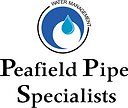Pipelines play a crucial role in transporting liquids and gases over vast distances, serving industries ranging from oil and gas to water supply. Maintaining the integrity of these pipelines is of paramount importance to ensure safety, prevent leaks, and minimize environmental impact. One of the primary methods used to assess the structural integrity of pipelines is the pressure test procedure. In this article, we will delve into the step-by-step process of conducting a pipeline pressure test, highlight safety considerations, discuss compliance with regulations, troubleshoot common challenges, and present best practices for successful testing.
Introduction to Pipeline Pressure Test Procedure
The safe operation of pipelines is vital to prevent catastrophic failures that can lead to environmental disasters and loss of life. Pressure testing is a critical aspect of maintaining pipeline integrity, as it allows engineers to assess the pipeline’s ability to withstand varying levels of pressure. By subjecting the pipeline to controlled pressure, potential weaknesses or defects can be identified before they escalate into major issues.
Preparing for a Pipeline Pressure Test
Before embarking on a pressure test, a thorough preparation phase is necessary. This begins with an initial inspection and assessment of the pipeline to identify any potential risks or hazards. This inspection involves reviewing pipeline specifications and design to ensure that the pipeline is suitable for the chosen testing method. Selecting the appropriate pressure testing method is a key decision, with hydrostatic testing and pneumatic testing being the most common. The method chosen depends on factors such as the pipeline’s material, purpose, and the fluid it transports.
Step-by-Step Pipeline Pressure Testing Procedure
The pressure testing procedure involves several meticulous steps to ensure accurate results and maintain safety. First, equipment and materials are prepared. This includes setting up testing equipment, installing sealing mechanisms, and attaching pressure gauges. Next, the pipeline is purged and cleaned to remove any debris or contaminants that could affect the test’s accuracy. It’s essential to ensure the pipeline is free from obstructions that could impede the flow of the test medium.
Once the pipeline is ready, it’s filled with the chosen test medium, such as water, air, or an inert gas. The filling process must be gradual and controlled to prevent sudden pressure changes that could damage the pipeline. Subsequently, the pressurization process begins, with pressure gradually increased to the desired level. During this phase, constant monitoring is essential to detect any pressure fluctuations or potential leaks.
The pipeline is then held at the designated pressure level for a specified duration. This holding period allows engineers to assess whether the pipeline can maintain pressure over time. Continuous monitoring and adjustment are necessary to ensure accurate results. After the holding period, the pressure is released in a safe and controlled manner, followed by proper depressurization. Ventilation procedures must be followed meticulously to ensure the safety of personnel and the environment.
Inspection and Assessment after Testing
Following the pressure test, a thorough inspection is conducted to assess the pipeline’s condition. Visual inspections are carried out to identify any signs of leaks, deformities, or other abnormalities. The results of the pressure test and inspection are carefully documented for future reference and auditing purposes. This documentation serves as a record of the pipeline’s integrity at the time of testing.
Safety Considerations During Pipeline Pressure Testing
While pressure testing is crucial for pipeline integrity assessment, it also presents potential hazards and risks. Overpressurization, explosions, ruptures, and environmental impacts are all concerns that must be addressed. To mitigate these risks, strict safety protocols must be followed. Personal protective equipment (PPE) should be worn by all personnel involved, and an emergency response plan must be in place. Additionally, evacuation procedures should be clearly outlined in case of emergencies.
Compliance and Regulatory Aspects
Pressure testing procedures must adhere to relevant industry standards and codes to ensure consistency and accuracy. Standards such as ASME B31.8 and API 1104 provide guidelines for conducting pressure tests effectively. Compliance with legal requirements and obtaining necessary permits from government authorities are essential steps in the testing process. Proper documentation and reporting are crucial to demonstrate compliance with regulations and ensure accountability.
Common Challenges and Troubleshooting
Despite careful planning and execution, challenges can arise during pressure testing. Unexpected leaks are a common issue that requires immediate attention. Minor leaks can often be located and addressed through quick repairs, while major leaks or failures may necessitate a repeat of the pressure test after repairs are made. Pressure loss and fluctuations can also occur due to various factors, requiring engineers to identify the causes and rectify them before proceeding.
Best Practices for Successful Pipeline Pressure Testing
Several best practices can contribute to the success of pipeline pressure testing. Thorough planning and preparation are paramount, including selecting the appropriate testing method and equipment. Effective communication and coordination among the testing team members are essential to ensure a smooth process. Conducting mock tests for practice can help identify potential issues and refine the procedure. Lastly, regular maintenance of testing equipment is crucial to ensure accurate and reliable results.
Conclusion
Pipeline pressure testing is a fundamental procedure to guarantee the integrity and safety of pipelines that traverse vast distances, carrying essential resources. By meticulously following the step-by-step process, adhering to safety protocols, complying with regulations, addressing challenges, and implementing best practices, engineers can confidently assess the integrity of pipelines and prevent potential disasters. As technology and industry standards evolve, ongoing advancements in pressure testing methodologies will continue to enhance the safety and reliability of pipelines around the world.
